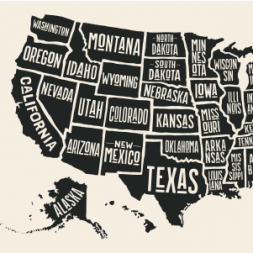Nurse Practitioner Salaries are Decreasing in These Two States
Year over year, nurse practitioners have enjoyed gains when it comes to compensation. In some cases, these salary increases have been quite significant. Between 2015 and 2016, for example, the average salary rose more than $20,000 dollars for nurse practitioners practicing in Wyoming. Statewide data certainly doesn’t represent reality for each NP individually (so don’t fret if you haven’t received a raise recently), but can give us a valuable glimpse into professional trends.
Nurse practitioners are increasingly looked to as a cost effective model for providing care to an increasing number of individuals. With the cost of healthcare delivery rapidly rising, and political uncertainty surrounding medicine, many employers look to NPs as low-risk hires compared with bringing a physician on board. Nurse practitioners are less likely to demand an ownership or partnership sake in a practice, and aren’t as costly to employ. In the face of uncertainty, employers view NPs as a conservative staffing model for growing a practice while insulating themselves from changes that might occur in the industry.
Along with the financial and political perks associated with nurse practitioners, come favorable legal trends in the profession. Scope of practice laws regulating the way NPs practice have become increasingly permissive in most states. As nurse practitioners gain more autonomy, they become more effective in their practices and therefore more valuable to employers.
While NP salaries remain decidedly lower than those for physicians, the positives associated with using nurse practitioners are driving NP salaries higher…in most states. Nurse practitioner salary data from the U.S. Bureau of Labor Statistics shows that the mean annual wage for nurse practitioners decreased in two states from 2015 to 2016.
Arkansas
Once dubbed the “Land of Opportunity”, Arkansas isn’t holding true to its title, at least for NPs. Between 2015 and 2016, the average salary for nurse practitioners decreased from $97,680 to $89,440, a difference of more than $8,200.
Montana
While the salary difference for NPs in Montana isn’t nearly as dramatic, nurse practitioners in the state have not enjoyed the bump in pay seen by the rest of the country. In 2015, the mean annual wage for nurse practitioners practicing in Montana was $92,800. This is compared to a mean annual wage of $92,120 in 2016, a decrease of $680.
Why these regional salary slumps? The job market for nurse practitioners varies significantly by region. A surplus of NPs in the area may drive down pay. Alternately, limiting scope of practice regulations can make employing nurse practitioners less desirable in certain locations. Finally, statistics are best analyzed as a larger sample size. It’s possible that declining salaries in Arkansas and Montana will correct themselves in 2017, making up for a short-term slump.
How has your nurse practitioner salary changed in the past few years?
You Might Also Like: 5 Tips to Avoid Awkwardness When Asking for a Raise

